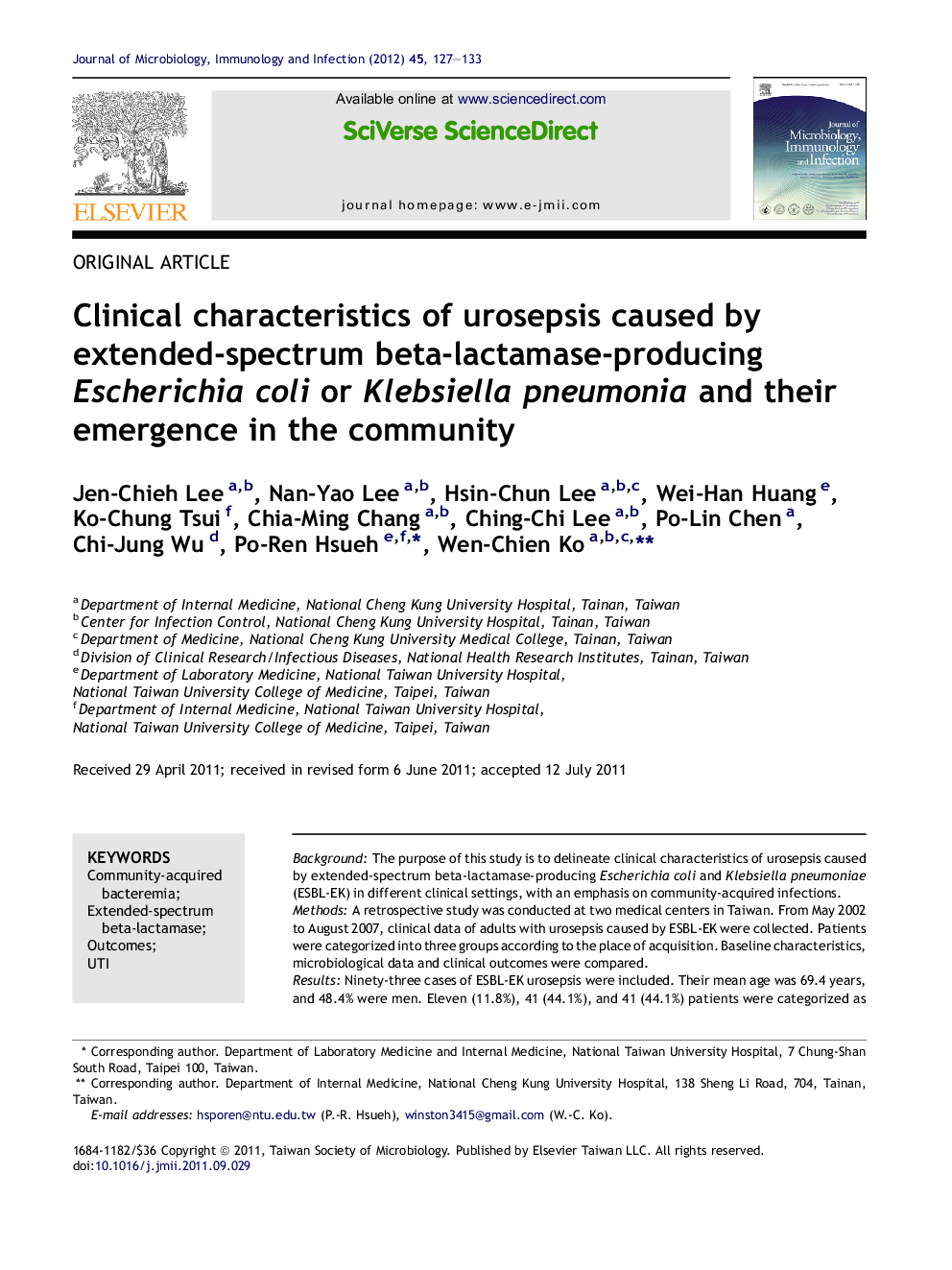| Article ID | Journal | Published Year | Pages | File Type |
|---|---|---|---|---|
| 3378322 | Journal of Microbiology, Immunology and Infection | 2012 | 7 Pages |
BackgroundThe purpose of this study is to delineate clinical characteristics of urosepsis caused by extended-spectrum beta-lactamase-producing Escherichia coli and Klebsiella pneumoniae (ESBL-EK) in different clinical settings, with an emphasis on community-acquired infections.MethodsA retrospective study was conducted at two medical centers in Taiwan. From May 2002 to August 2007, clinical data of adults with urosepsis caused by ESBL-EK were collected. Patients were categorized into three groups according to the place of acquisition. Baseline characteristics, microbiological data and clinical outcomes were compared.ResultsNinety-three cases of ESBL-EK urosepsis were included. Their mean age was 69.4 years, and 48.4% were men. Eleven (11.8%), 41 (44.1%), and 41 (44.1%) patients were categorized as having community-acquired, healthcare-associated, and hospital-acquired infections, respectively. Cases of ESBL-EK urosepsis from different settings shared similar characteristics in terms of age, gender, comorbidity and resistance profiles of bacterial strains. Of the bacterial isolates, 75% and 38.7% were resistant to fluoroquinolones and aminoglycosides, respectively. Cases of community-acquired urosepsis had a lower disease severity than those acquired in healthcare facilities or hospitals. Of note, there was no case fatality in 11 cases of community-acquired urosepsis and, in contrast, a crude mortality rate of 41.5% was found among adults with hospital-acquired urosepsis (p < 0.001).ConclusionA limited number of adults with community-acquired urosepsis caused by ESBL-EK in the present study had a favorable outcome. Nonetheless, clinicians should be cautious of the emergence of urinary tract infections caused by ESBL-producers in the community setting.
